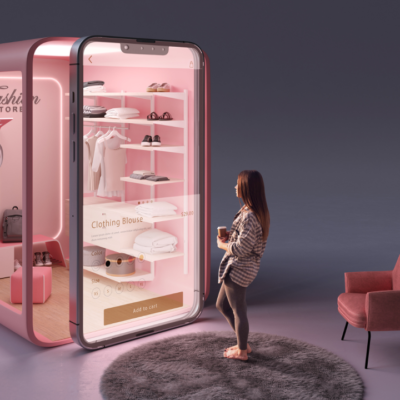The food delivery industry has experienced a significant transformation in recent years, driven by advancements in Artificial Intelligence (AI). From optimizing delivery routes to personalizing customer experiences, AI is revolutionizing how food reaches our tables. This article explores the multifaceted impact of AI on food delivery services, highlighting key innovations and their implications for businesses and consumers alike. (The Future of Food Delivery: AI-Powered Ordering and Deliver)

1. AI-Powered Personalization
Tailored Recommendations
AI algorithms analyze customer data, including past orders, browsing behavior, and preferences, to offer personalized food suggestions. This enhances user satisfaction and increases order frequency. (The Role of AI in Food Delivery App Development: Examples)
Dynamic Pricing Strategies
Machine learning models adjust pricing based on factors like demand, time of day, and customer behavior, optimizing revenue and customer retention.
2. Optimized Delivery Logistics
Route Optimization
AI systems process real-time traffic data, weather conditions, and delivery locations to determine the most efficient routes, reducing delivery times and fuel consumption. (The Role of AI in Food Delivery App Development: Examples)
Predictive Demand Forecasting
By analyzing historical data and external factors, AI predicts order volumes, allowing businesses to allocate resources effectively and minimize waste. (The Role of AI in Food Delivery App Development: Examples)
3. Automation and Robotics
Autonomous Delivery Vehicles
Companies like Starship Technologies and Serve Robotics deploy AI-powered robots for last-mile deliveries, enhancing efficiency and reducing labor costs. (Delivery robot)
Drone Deliveries
In certain regions, drones equipped with AI navigate complex environments to deliver food quickly, especially in congested urban areas.
4. Enhanced Customer Service
AI Chatbots
AI-driven chatbots handle customer inquiries, order tracking, and issue resolution, providing instant support and improving user experience. (How Daily Harvest is using AI to improve everything from customer care to packaging)
Voice Ordering Systems
Innovations like Kea’s voice AI allow customers to place orders through phone calls, streamlining the ordering process for those less inclined to use apps. (You can now place DoorDash and Uber Eats orders through a call with an AI voice bot)
5. Quality Control and Food Safety
Real-Time Monitoring
AI sensors monitor food temperature and handling during delivery, ensuring compliance with safety standards and reducing spoilage.
Hygiene Compliance
Computer vision systems detect hygiene practices in kitchens, alerting management to potential violations and maintaining food safety. (The Role of AI in Food Delivery App Development: Examples)
6. Inventory and Supply Chain Management
Smart Inventory Systems
AI predicts inventory needs based on demand forecasts, reducing overstocking and minimizing food waste.
Supplier Optimization
Machine learning evaluates supplier performance, helping businesses choose reliable partners and streamline procurement processes.

7. Case Studies: Industry Leaders Embracing AI
Daily Harvest
This meal delivery service utilizes AI for product recommendations, customer service, and packaging optimization, enhancing overall efficiency. (How Daily Harvest is using AI to improve everything from customer care to packaging)
Swiggy
India’s leading food delivery platform employs AI for route optimization, demand forecasting, and personalized marketing, improving service quality. (The Role of AI in Food Delivery App Development: Examples)
Uber Eats
Uber Eats integrates AI for dynamic pricing, delivery logistics, and customer engagement, maintaining a competitive edge in the market.
8. Future Outlook
As AI technology continues to evolve, its integration into food delivery services is expected to deepen. Future developments may include more sophisticated personalization, fully autonomous delivery systems, and advanced predictive analytics, further transforming the industry landscape. (How Daily Harvest is using AI to improve everything from customer care to packaging)
Conclusion
AI is undeniably reshaping the food delivery sector, offering enhanced efficiency, personalized experiences, and improved safety standards. Businesses that embrace these technologies position themselves for greater customer satisfaction and operational success in an increasingly competitive market.
For more click here – Red Lobster Bankruptcy: Is America’s Favorite Seafood Chain Sinking?





